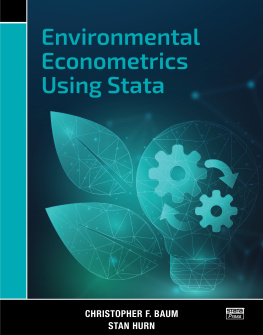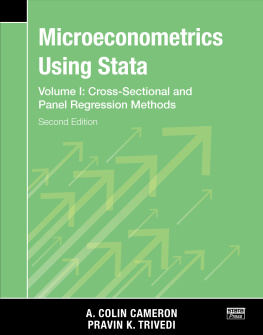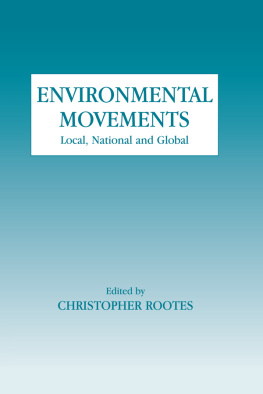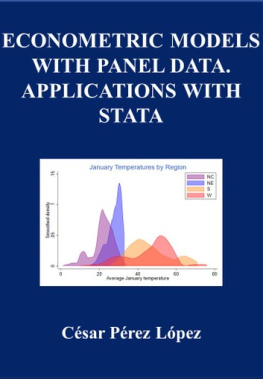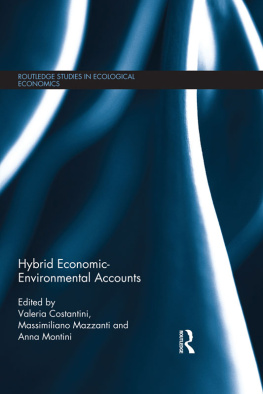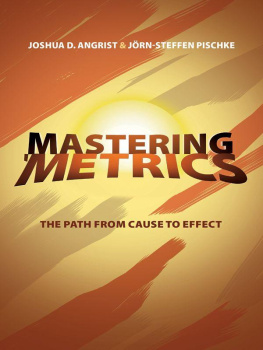Environmental Econometrics
Using Stata
Christopher F. Baum
Department of Economics and School of Social Work
Boston College
Stan Hurn
School of Economics and Finance
Queensland University of Technology


A Stata Press Publication
StataCorp LLC
College Station, Texas

Copyright 2021 StataCorp LLC
All rights reserved. First edition 2021
Published by Stata Press, 4905 Lakeway Drive, College Station, Texas 77845
Typeset in L A T E X 
Printed in the United States of America
Print ISBN-10: 1-59718-355-5
Print ISBN-13: 978-1-59718-355-0
ePub ISBN-10: 1-59718-356-3
ePub ISBN-13: 978-1-59718-356-7
Mobi ISBN-10: 1-59718-357-1
Mobi ISBN-13: 978-1-59718-357-4
Library of Congress Control Number: 2021934557
No part of this book may be reproduced, stored in a retrieval system, or transcribed, in any form or by any meanselectronic, mechanical, photocopy, recording, or otherwisewithout the prior written permission of StataCorp LLC.
Stata,  , Stata Press, Mata,
, Stata Press, Mata,  , and NetCourse are registered trademarks of StataCorp LLC.
, and NetCourse are registered trademarks of StataCorp LLC.
Stata and Stata Press are registered trademarks with the World Intellectual Property Organization of the United Nations.
NetCourseNow is a trademark of StataCorp LLC.
L A T E X  is a trademark of the American Mathematical Society.
is a trademark of the American Mathematical Society.
Contents
1.1
1.1.1
1.1.2
1.1.3
1.1.4
2.1
2.2
2.3
2.3.1
2.3.2
2.4
2.5
3.1
3.2
3.3
3.4
3.5
3.6
3.7
4.1
4.2
4.3
4.4
4.5
4.6
5.1
5.2
5.3
5.4
5.4.1
5.4.2
5.4.3
5.5
5.5.1
5.5.2
5.6
6.1
6.2
6.3
6.3.1
6.3.2
6.4
6.4.1
6.4.2
6.5
6.5.1
6.5.2
6.5.3
6.6
7.1
7.2
7.3
7.4
7.4.1
7.4.2
7.5
7.6
7.7
8.1
8.2
8.3
8.3.1
8.3.2
8.3.3
8.4
8.5
8.6
8.6.1
8.6.2
8.7
9.1
9.2
9.3
9.4
9.4.1
9.4.2
9.4.3
9.5
9.6
10.1
10.2
10.3
10.4
10.5
10.6
10.7
11.1
11.2
11.3
11.4
11.5
11.6
11.6.1
11.6.2
11.7
12.1
12.2
12.2.1
12.2.2
12.3
12.4
12.4.1
12.4.2
12.4.3
12.4.4
12.4.5
12.5
12.6
13.1
13.2
13.2.1
13.2.2
13.3
13.4
13.5
13.6
13.7
13.8
14.1
14.2
14.3
14.3.1
14.3.2
14.4
14.5
14.6
15.1
15.2
15.3
15.4
15.5
15.6
15.7
A
A.1
A.1.1
A.1.2
A.1.3
A.2
A.2.1
A.2.2
A.2.3
A.2.4
A.3
A.4
A.5
A.6
Figures
1.1
1.2
1.3
1.4
1.5
1.6
1.7
1.8
2.1
2.2
2.3
2.4
3.1
3.2
4.1
4.2
4.3
4.4
4.5
4.6
5.1
5.2
5.3
5.4
6.1
6.2
6.3
6.4
6.5
6.6
7.1
7.2
7.3
7.4
8.1
8.2
8.3
8.4
9.1
9.2
9.3
9.4
10.1
10.2
10.3
10.4
10.5
10.6
10.7
10.8
11.1
11.2
11.3
11.4
11.5
11.6
11.7
11.8
12.1
13.1
13.2
13.3
14.1
14.2
14.3
14.4
15.1
15.2
15.3
15.4
15.5
Tables
2.1
4.1
9.1
11.1
11.2
13.1
A.1
Preface
There is no doubt that the environment is one of the greatest challenges faced bypolicymakers today. The key issues addressed by environmental sciences are often empirical.In many instances, very detailed, sizable datasets are available. Researchers in thisfield, including those in academe, research bodies, and government agencies, shouldhave a solid understanding of the econometric tools best suited for analysis of thesedata.
Of course, there exist complex and expensive physical models of the environment that dealwith many of the problems addressed in this book, such as pollution, temperature, greenhousegas emissions, and sea levels to name but a few. However, it is becoming increasingly clear,through the increased involvement of econometricians in environmental issues thatreduced-form models have a role to play not only in modeling environmental phenomena butalso in producing point and density forecasts. In short, successful environmental modelingdoes not necessarily require a structural model, but it does require that the econometricsunderlying the reduced-form approaches is competently done. This provides the essentialraison dtre for the book.
This book is designed to introduce environmental researchers to a broad range ofeconometric techniques that can be effectively applied to environmental data. The studyof environmental issues is inherently interdisciplinary, encompassing the physicalsciences, economics, sociology, political science, and public health. Researchers in thesefields are likely to have some statistical training, and an understanding of basicstatistical concepts is presumed. The development of modern econometrics, coupledwith increasing computational capability to process sizable datasets, has broadenedour ability to study environmental data using powerful analytical and graphicaltools.
Although our focus is on applied econometric techniques appropriate for the analysis ofenvironmental data, we expect this book to be widely used. We believe that thepotential audience includes economists at the undergraduate, graduate, and professionallevels in academia, research institutes, consulting firms, government agencies, andinternational organizations. Our approach provides a gentle introduction to the most widely used econometric tools, which should serve to address the needs of those who may have only seen econometrics at an undergraduate level, such as those in public policy programs. We not only emphasize how to fit models in Stata but also highlight the need for using a wide range of diagnostic tests to validate the results of estimation and subsequent policy conclusions. This emphasis on careful, reproducible research should be appreciated by academic and non-academic researchers who are seeking to produce credible, defensible conclusions about key issues in environmental science.
Although appendix A provides a brief guide to using Stata effectively, thus book assumes that the reader is familiar with Statas command line interface and elementary concepts of Stata programming such as do-files and data management facilities. An understanding of basic linear regression techniques will also be helpful but is not essential, because the book covers the basic building blocks of modern econometrics. More advanced econometric methods are also introduced, interspersing presentation of the underlying theory with clear examples of their employment on environmental data. In contrast with many existing econometric textbooks that deal mainly with the theoretical properties of estimators and test statistics, this book addresses the implementation issues that arise in the computational aspects of applied econometrics. The computer code that is provided will also help to bridge the gap between theory and practice so that the reader, as a result, can build on the code and tailor it to more challenging applications.

